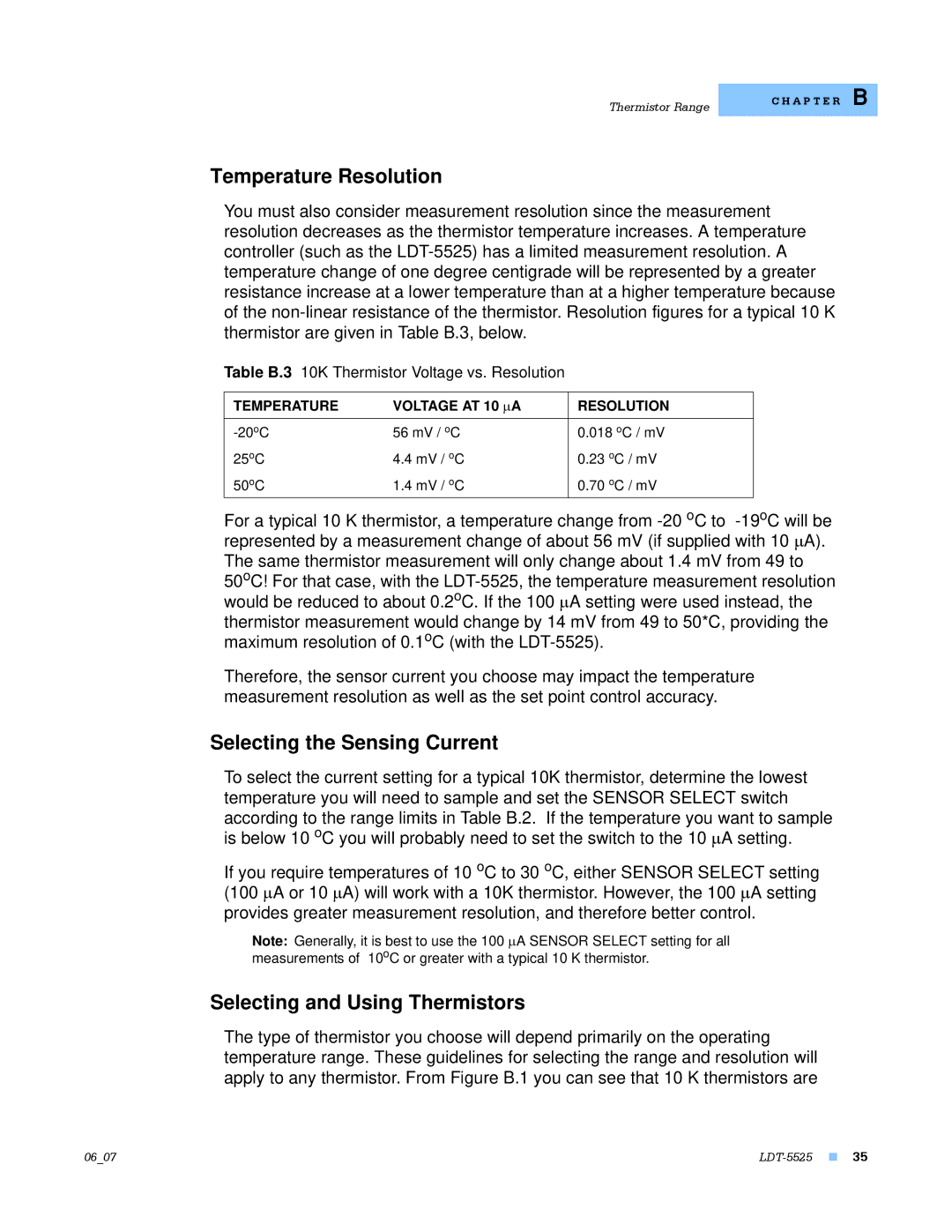Thermistor Range
C H A P T E R B
Temperature Resolution
You must also consider measurement resolution since the measurement resolution decreases as the thermistor temperature increases. A temperature controller (such as the
Table B.3 10K Thermistor Voltage vs. Resolution
TEMPERATURE | VOLTAGE AT 10 µA | RESOLUTION |
|
|
|
56 mV / oC | 0.018 oC / mV | |
25oC | 4.4 mV / oC | 0.23 oC / mV |
50oC | 1.4 mV / oC | 0.70 oC / mV |
For a typical 10 K thermistor, a temperature change from
50oC! For that case, with the
Therefore, the sensor current you choose may impact the temperature measurement resolution as well as the set point control accuracy.
Selecting the Sensing Current
To select the current setting for a typical 10K thermistor, determine the lowest temperature you will need to sample and set the SENSOR SELECT switch according to the range limits in Table B.2. If the temperature you want to sample is below 10 oC you will probably need to set the switch to the 10 µA setting.
If you require temperatures of 10 oC to 30 oC, either SENSOR SELECT setting (100 µA or 10 µA) will work with a 10K thermistor. However, the 100 µA setting provides greater measurement resolution, and therefore better control.
Note: Generally, it is best to use the 100 µA SENSOR SELECT setting for all measurements of 10oC or greater with a typical 10 K thermistor.
Selecting and Using Thermistors
The type of thermistor you choose will depend primarily on the operating temperature range. These guidelines for selecting the range and resolution will apply to any thermistor. From Figure B.1 you can see that 10 K thermistors are
06_07 |
| 35 |
